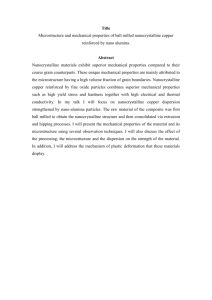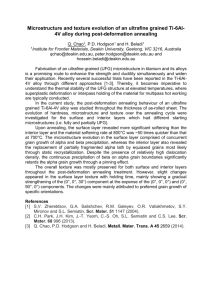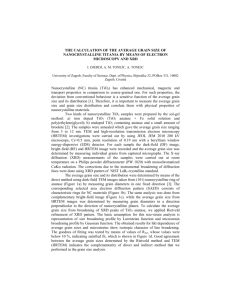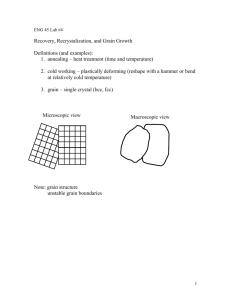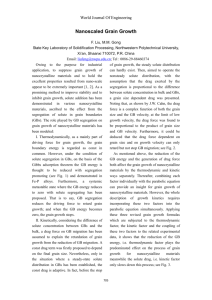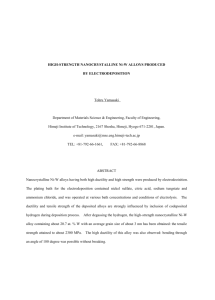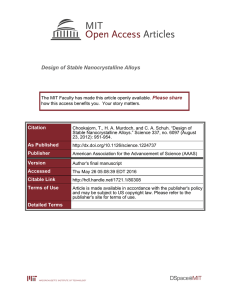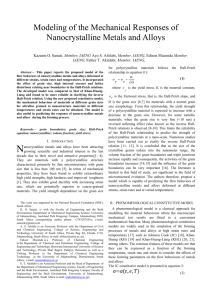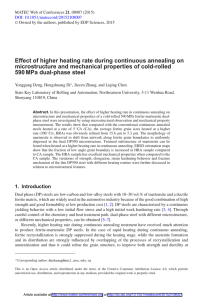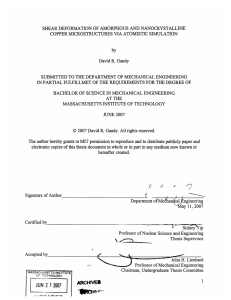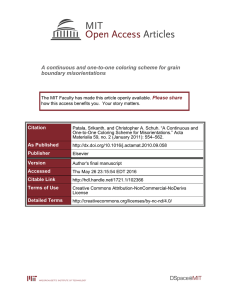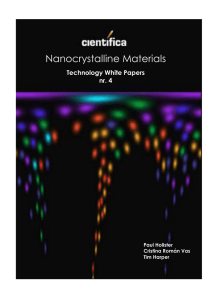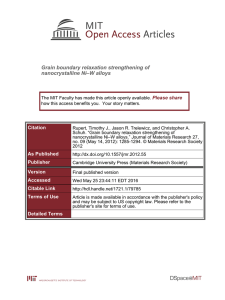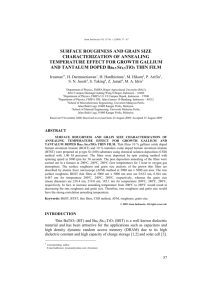TEM In-Situ Annealing Study of the Abnormal Grain Growth in
advertisement
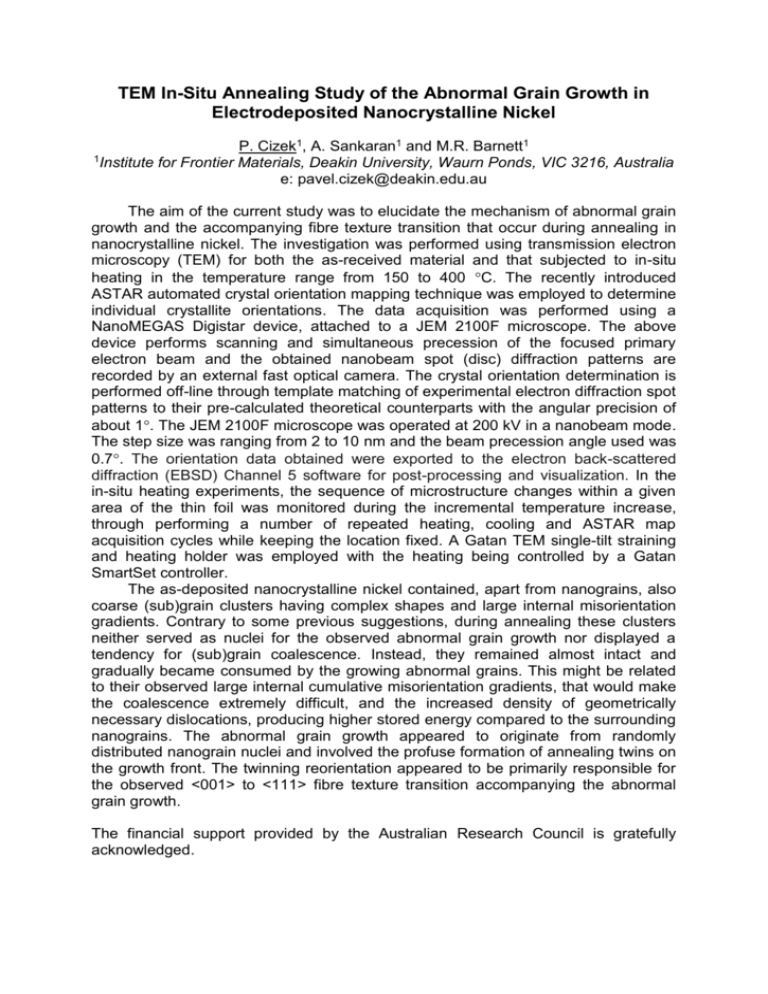
TEM In-Situ Annealing Study of the Abnormal Grain Growth in Electrodeposited Nanocrystalline Nickel P. Cizek1, A. Sankaran1 and M.R. Barnett1 1Institute for Frontier Materials, Deakin University, Waurn Ponds, VIC 3216, Australia e: pavel.cizek@deakin.edu.au The aim of the current study was to elucidate the mechanism of abnormal grain growth and the accompanying fibre texture transition that occur during annealing in nanocrystalline nickel. The investigation was performed using transmission electron microscopy (TEM) for both the as-received material and that subjected to in-situ heating in the temperature range from 150 to 400 C. The recently introduced ASTAR automated crystal orientation mapping technique was employed to determine individual crystallite orientations. The data acquisition was performed using a NanoMEGAS Digistar device, attached to a JEM 2100F microscope. The above device performs scanning and simultaneous precession of the focused primary electron beam and the obtained nanobeam spot (disc) diffraction patterns are recorded by an external fast optical camera. The crystal orientation determination is performed off-line through template matching of experimental electron diffraction spot patterns to their pre-calculated theoretical counterparts with the angular precision of about 1. The JEM 2100F microscope was operated at 200 kV in a nanobeam mode. The step size was ranging from 2 to 10 nm and the beam precession angle used was 0.7. The orientation data obtained were exported to the electron back-scattered diffraction (EBSD) Channel 5 software for post-processing and visualization. In the in-situ heating experiments, the sequence of microstructure changes within a given area of the thin foil was monitored during the incremental temperature increase, through performing a number of repeated heating, cooling and ASTAR map acquisition cycles while keeping the location fixed. A Gatan TEM single-tilt straining and heating holder was employed with the heating being controlled by a Gatan SmartSet controller. The as-deposited nanocrystalline nickel contained, apart from nanograins, also coarse (sub)grain clusters having complex shapes and large internal misorientation gradients. Contrary to some previous suggestions, during annealing these clusters neither served as nuclei for the observed abnormal grain growth nor displayed a tendency for (sub)grain coalescence. Instead, they remained almost intact and gradually became consumed by the growing abnormal grains. This might be related to their observed large internal cumulative misorientation gradients, that would make the coalescence extremely difficult, and the increased density of geometrically necessary dislocations, producing higher stored energy compared to the surrounding nanograins. The abnormal grain growth appeared to originate from randomly distributed nanograin nuclei and involved the profuse formation of annealing twins on the growth front. The twinning reorientation appeared to be primarily responsible for the observed <001> to <111> fibre texture transition accompanying the abnormal grain growth. The financial support provided by the Australian Research Council is gratefully acknowledged.



